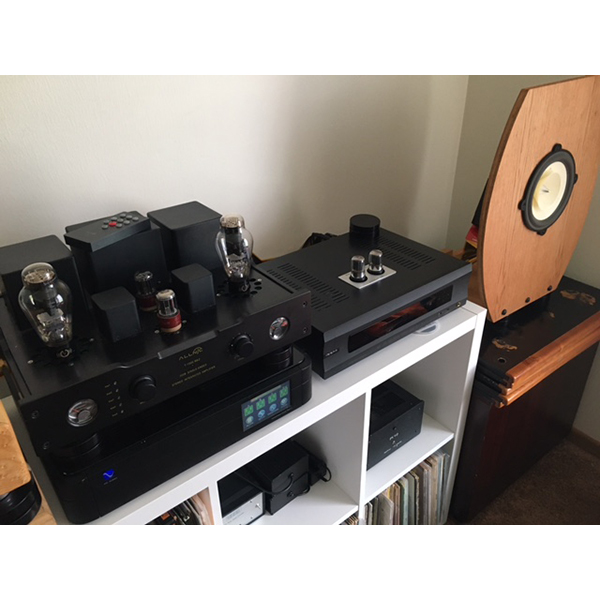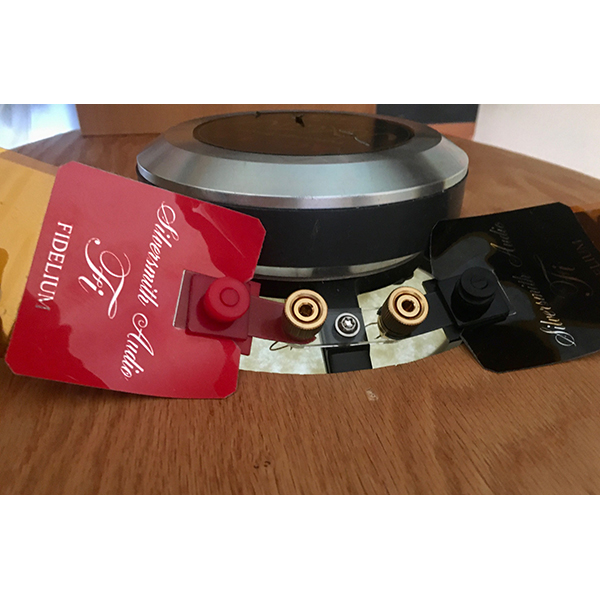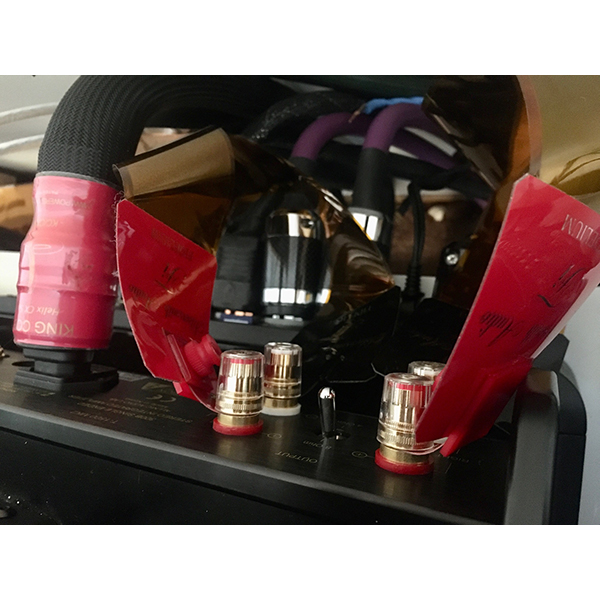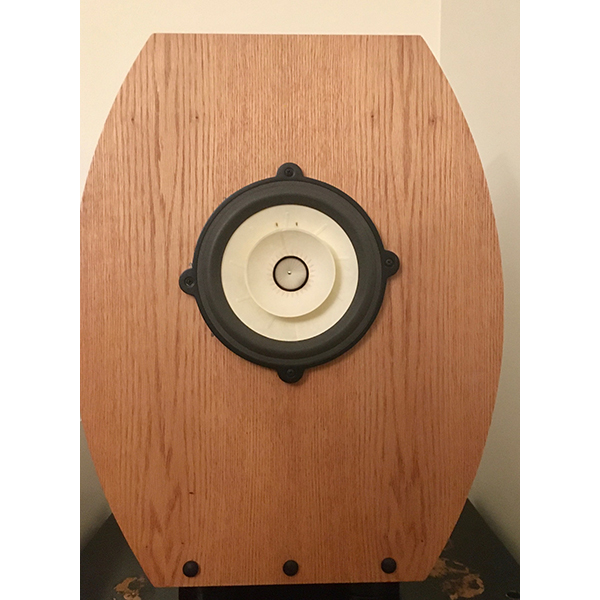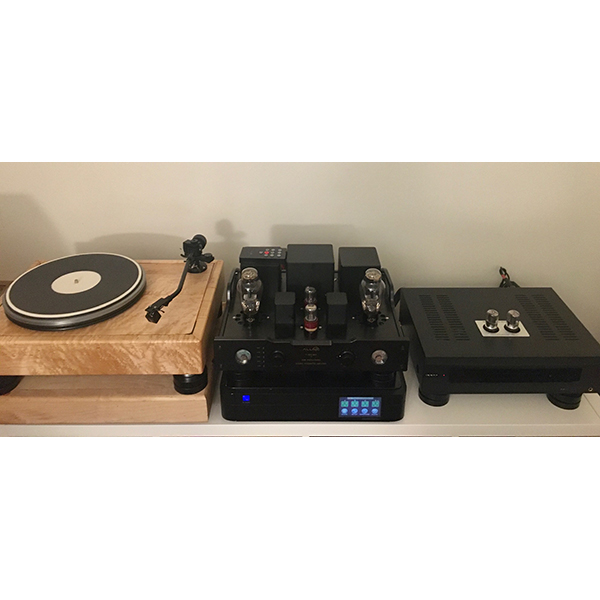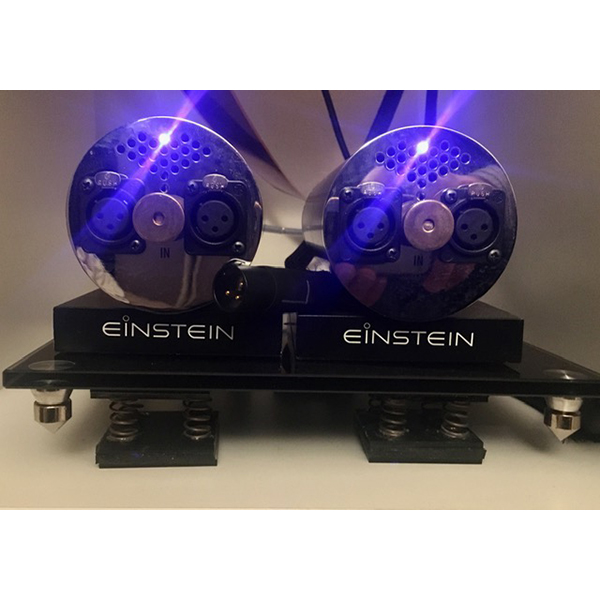System:
Speakers: Voxativ AC-1.6 full-range drivers in Caintuck Betsy baffles. REL Stentor III sub-bass.
Power Amp: Allnic T-1500 300B integrated amplifier.
Previous speaker cables: Skogrand Vivaldi and Bybee filters.
Source: Lenco 75 turntable with Jelco arm and Dynavector XV-1s cartridge, Oppo 105 with ModWright "Truth" tube output modifications.
Preamp: Einstein dual mono phono preamp.
Power: PS Audio P5 regenerator. Power supplies for phono preamps and Oppo media player. Power cables by Shunyata, Zen Audio and Furutech.
Cables: Nordost Valhalla interconnects.
Fidelium speaker cables are the "end game" for me, following a succession of excellent products I used for years from Siltech, Nordost and Skogrand. I was immediately impressed with how quiet they were, and how their extraordinarily low noise floor provided a greater sense of clarity, detail and transparency. The result was a more engaging and realistic musical experience.
This was not my first exposure to ribbon cables, but the the others sounded rather "ho-hum" to my ears, while the Fidelium cables really stood out . For me, the proof was in the listening. I also found these cables to be a delight to attach, given their light weight and total flexibility. I could not be happier with them.
Ease of setup:
These cables are wonderful - AND they are THE easiest cables to work with on the planet. As for the "white glove" audiophiles who think first of cosmetics, I continue to roll my eyes at their sissy behavior - gear heads with OCD. These cables are by no means delicate, provided you afford them the care that goes with anything that is fine in nature. I can see that any "ripples" are simply air bubbles in the magic jacketing; I think of it as the air dialectic at work.
And these connectors are more flexible and easier to work with than any spade. Plus you avoid the extra expensive and potential problems with any separate connector; it's totally Zen. (Not to knock my boy Knut, but the most objectionable thing about my Skogrand cables is that they are VERY hard to work with, given their weight, stiffness, and the overly thick spades that I used. (I got hooked on spades when I used Wilson speakers, which don't disgrace themselves with lowly banana connectors.)
Wonderful sound:
I only needed to listen to your cables for about 10 seconds to hear that these were something special. What immediately struck me was their quietness, which is the starting point for delivering other good things, including clarity, detail, transparency and separation. The end result of all this is a combination of realism and emotional connection, which come through as part of an engaging and compelling listening experience.
From a technical standpoint, so much of the realism in music is the result of capturing the initial sounding of a note; the other end is the quality of the decays. The characteristics of your cable allow this realism to come through. (You might look up an old TV presentation by Leonard Bernstein, who produced musical content for children. He did an experiment where he prevented them from hearing the initial attack of an instrument, leaving only the sustained tone. Then he asked them to guess which instrument was playing. In all cases, there were three or four candidates put forward. Without the initial sounding, it was really hard to tell!)
Additionally, your cables are neutral and natural-sounding in conveying the entire frequency range. My experience has been with the mid-level range of speaker cables from Siltech (G5 wire) and Nordost (Heimdall 2.) These had a definite sound character, with Siltech being cooler and Nordost a bit warmer, with a stronger bass response. The entry-level Skogrand Vivaldi were my preference which had a more full-bodied sound (they supposedly deliver 85% of the experience from their TOTL model which costs 25x more...)
In my experience, break-in is simply a matter of getting used to your equipment, so I don't feel it's unfair to evaluate your speakers before having them play noise for the next 200 hours. These are real keepers, my end-game speaker cables. I see no need to look any further.
